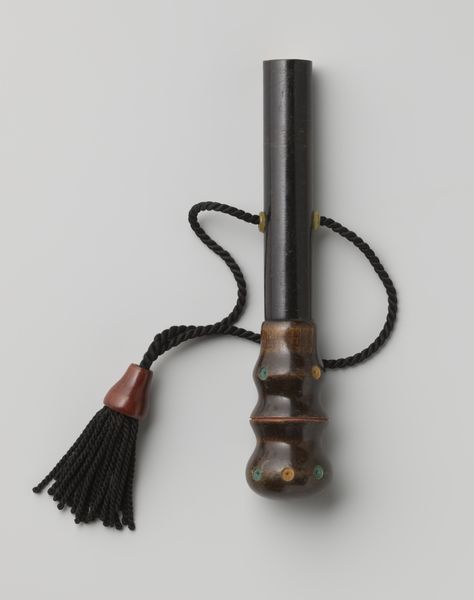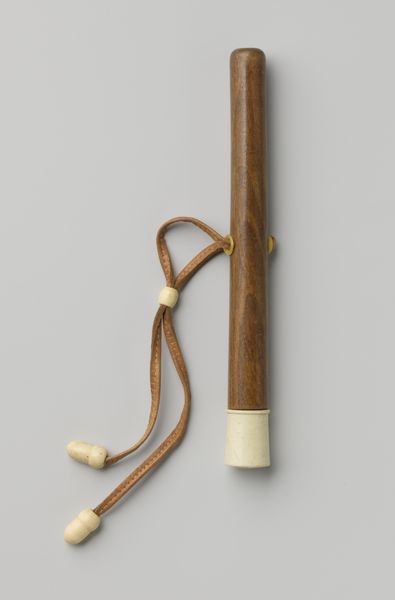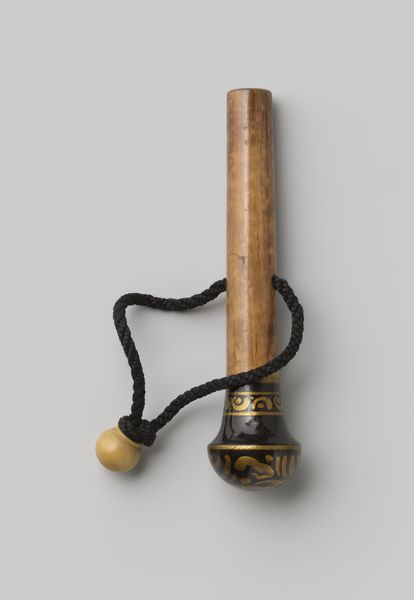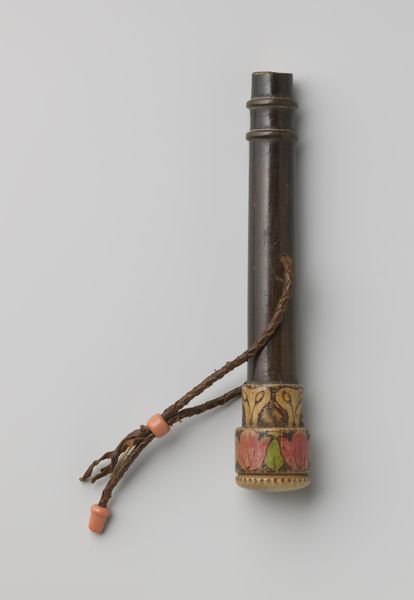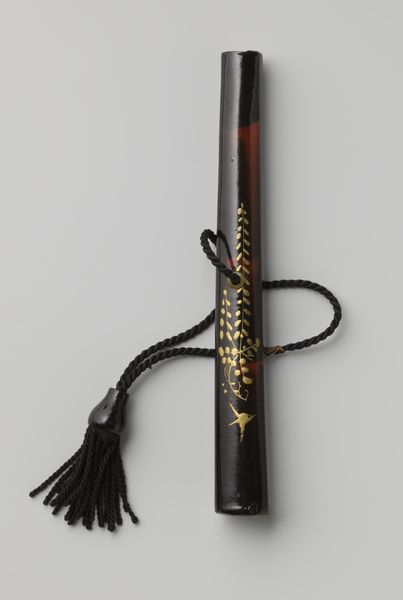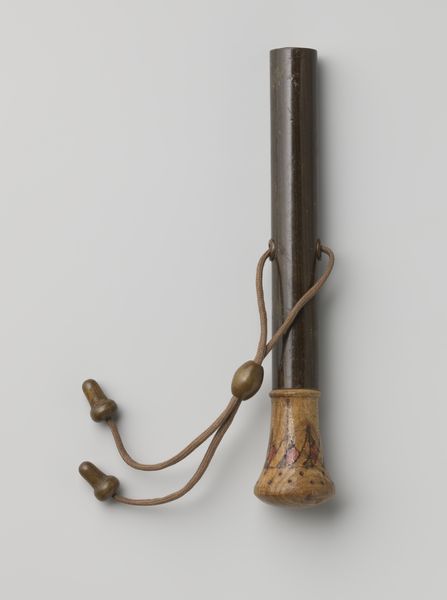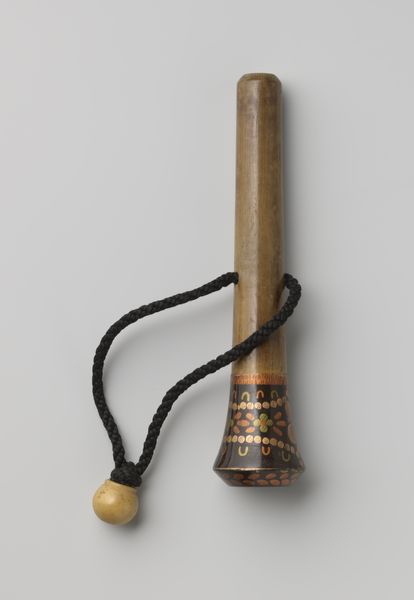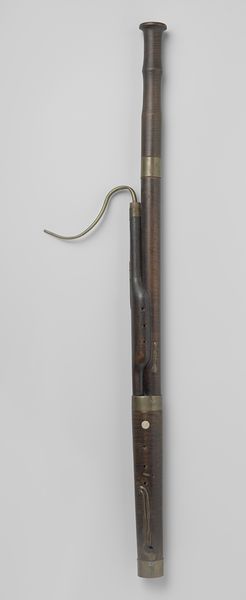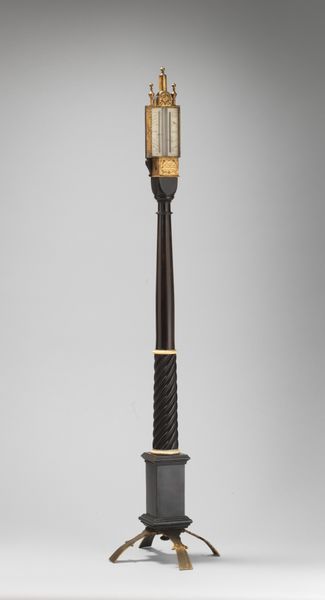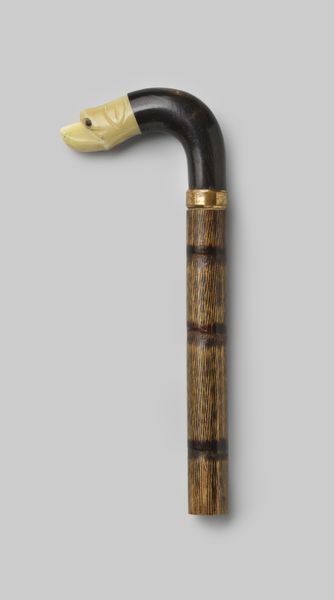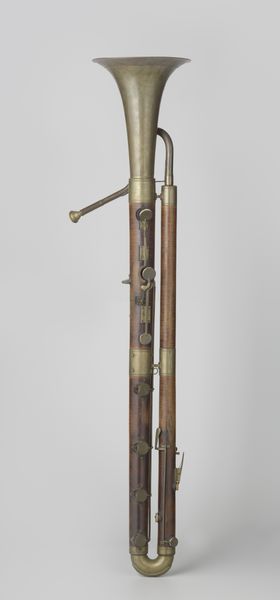
Handvat en knop van geverfd hout, voor een parasol of paraplu; met koord c. 1920
0:00
0:00
gustavschnitzler
Rijksmuseum
textile, wood
#
textile
#
wood
#
decorative-art
Dimensions: length 17 cm, diameter 3.5 cm
Copyright: Rijks Museum: Open Domain
Curator: Here we have a rather charming object dating back to around 1920. It's a handle and knob for either a parasol or an umbrella, crafted from painted wood and embellished with a textile cord. Editor: It's smaller than I imagined. There's an undeniable elegance to its form, despite the humble materials. The tassel detail suggests a deliberate effort at ornamentation. Curator: Exactly! It's indicative of the Decorative Arts movement. It transforms an everyday, functional object into something refined. The umbrella, traditionally a symbol of status, here gets an extra layer of identity through this personalized handle. It echoes similar adornments on walking sticks, speaking to ideas about identity. Editor: I find it fascinating how this simple wooden handle, something so mundane, could also represent societal hierarchies of that time. Was carrying a parasol necessarily a class marker? Were there other groups, maybe those with illnesses, or those wanting to avoid direct sunlight for cosmetic reasons, who needed these in daily life? Curator: Certainly, sun protection was not uniformly accessible or valued, revealing certain levels of privilege. Furthermore, the very act of shielding oneself could also have symbolic weight, signifying status but also, at times, segregation. Editor: It also seems like such a physical embodiment of privilege. It's fascinating to imagine someone holding this and its function in shaping posture, carriage and maybe even self-perception in that time period. What I also find so intriguing are all the small connecting points where textile and the carved elements meet! How material is used really helps with creating the full image, Curator: It speaks to a cultural continuity in adornment, revealing much of a life experience and identity encoded in seemingly simple designs. Editor: Well, seeing how this practical object encapsulates broader social and historical issues, it definitely urges us to re-evaluate how design acts a vehicle for both utility and implicit value systems.
Comments
No comments
Be the first to comment and join the conversation on the ultimate creative platform.
